Is your air conditioner struggling to cool your home efficiently? The problem might lie in a small but critical component called the thermostatic expansion valve (TXV). This valve regulates the flow of refrigerant, ensuring your system operates at peak performance.
By controlling the amount of refrigerant entering the evaporator, the TXV maintains optimal pressure and heat exchange. This not only enhances cooling but also protects your compressor from damage. With advancements in HVAC technology, systems using TXVs have seen SEER rating improvements from 13 in 2006 to over 20 in 2023.
Understanding how this component works can save you energy and extend the lifespan of your AC. In this article, we’ll break down the basics of the TXV and provide practical tips to keep your system running smoothly.
Key Takeaways
- The TXV regulates refrigerant flow to optimize cooling efficiency.
- It protects your compressor by maintaining proper pressure levels.
- Modern systems with TXVs have higher SEER ratings.
- Proper maintenance can extend your AC’s lifespan.
- Common issues include hot air, frozen coils, and temperature fluctuations.
Welcoming You to the World of TXV: Setting the Stage for Enhanced Comfort
Feeling the heat even with your AC running? The valve known as the TXV might be the key to solving your cooling woes. This small but mighty component ensures your system runs efficiently, keeping your home comfortable all year round.
The TXV regulates the flow of refrigerant into the evaporator, preventing overfeeding or underfeeding. This balance is crucial for maintaining optimal pressure and heat exchange. When your TXV is working correctly, you’ll notice consistent cooling, lower energy bills, and a longer lifespan for your AC.
Common AC problems like hot air, frozen coils, or temperature fluctuations often stem from a malfunctioning TXV. By understanding how this component works, you can address these issues before they escalate.
Here’s how a well-adjusted TXV enhances your comfort:
- It ensures the right amount of refrigerant reaches the evaporator, improving cooling efficiency.
- It protects your compressor by maintaining proper pressure levels.
- It reduces energy consumption, saving you money on utility bills.
Real-life examples show how TXV adjustments have transformed home comfort. For instance, a family in Texas noticed their AC struggled during peak summer months. After replacing the TXV, their system ran smoothly, and their energy bills dropped by 15%.
Modern HVAC systems with TXVs have seen significant improvements in SEER ratings. In 2023, the minimum SEER rating was raised to 14, reflecting the importance of efficient components like the TXV.
| Feature | Benefit |
|---|---|
| Proper Refrigerant Flow | Prevents overfeeding or underfeeding the evaporator |
| Pressure Regulation | Protects the compressor and extends system life |
| Energy Efficiency | Reduces energy consumption and lowers bills |
By optimizing refrigerant flow, the TXV ensures your AC system operates at peak performance. This not only enhances comfort but also contributes to a greener, more energy-efficient home.
Ready to dive deeper into how your TXV works? Let’s explore the mechanics behind refrigerant flow adjustments in the next section.
Understanding How Your TXV Regulates Refrigerant Flow
Ever wondered how your AC keeps your home cool without breaking a sweat? The valve called the TXV plays a starring role. It ensures the right amount of refrigerant flows into the evaporator, balancing temperature and pressure like a well-tuned orchestra.
Temperature and Pressure in Perfect Harmony
Think of the TXV as a seesaw. On one side, you have temperature. On the other, pressure. When the temperature rises, the valve adjusts to let more refrigerant flow. When it drops, it reduces the flow. This balance keeps your system running smoothly.
Without this harmony, your AC could overheat or freeze up. For example, if the pressure is too low, the evaporator coil might freeze. Too high, and your compressor could overwork. The TXV ensures neither happens.
The Role of a Sensing Bulb and Equalizer
The sensing bulb is like the TXV’s eyes and ears. Attached to the suction line, it detects temperature changes. When it senses a change, it sends a signal to adjust the valve’s opening.
The equalizer works behind the scenes, ensuring the pressure inside the valve matches the system’s needs. Together, they keep your AC in top shape. If either fails, you might notice uneven cooling or higher energy bills.
Common issues like clogged valves or faulty bulbs can disrupt this balance. Regular maintenance can prevent up to 80% of these problems, keeping your system efficient and reliable.
By understanding how your TXV works, you can spot potential issues early and keep your home comfortable all year round. Ready to dive deeper into troubleshooting? Let’s explore common problems and solutions in the next section.
Discovering the Mechanics Behind Refrigerant Flow Adjustments
Have you ever thought about the tiny parts that keep your AC running smoothly? At the heart of your system is the thermostatic expansion valve, a small but powerful component that ensures your home stays cool and comfortable.
How the Needle Valve and Spring Work Together
Think of the needle valve and spring as a finely tuned duo. The needle valve controls the flow of refrigerant, while the spring provides the force needed to adjust it. Together, they ensure your system operates at peak efficiency.
When the sensing bulb detects a temperature change, it sends a signal to the valve. The spring then adjusts the needle valve’s position, balancing the pressure and flow of refrigerant. It’s like tuning a musical instrument—every adjustment ensures harmony.
Proper maintenance by a skilled technician is crucial. A well-adjusted valve and spring prevent issues like frozen coils or overheating, keeping your system running smoothly.
Here’s why this balance matters:
- It ensures the right amount of refrigerant reaches the evaporator.
- It protects your compressor by maintaining optimal pressure levels.
- It reduces energy consumption, saving you money on utility bills.
By understanding these mechanics, you can appreciate the complexity of your AC system and the importance of regular maintenance. Ready to learn more about troubleshooting common issues? Let’s dive into the next section.
Troubleshooting Common TXV Issues: Debris, Stress, and Refrigerant Leaks
Are you noticing inconsistent cooling or strange noises from your AC? These could be signs of trouble with your thermostatic expansion valve. Common issues like debris buildup, stress, and refrigerant leaks can disrupt your system’s performance. Let’s explore these problems and how to address them.
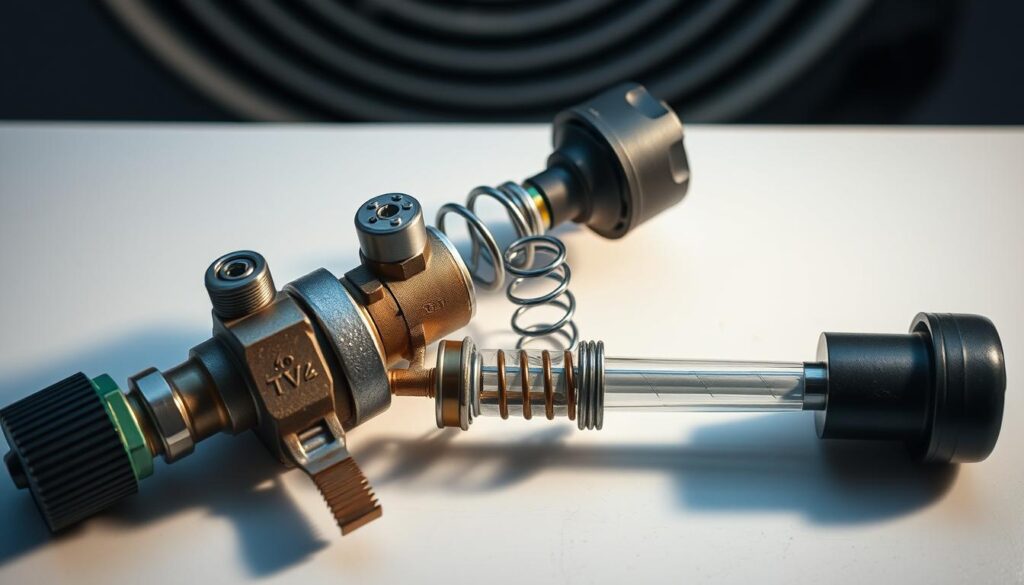
Impact of Foreign Contaminants on Valve Performance
Debris in your system can clog the valve, affecting its ability to regulate refrigerant flow. Contaminants like dirt, rust, or metal shavings can cause blockages, leading to uneven cooling or frozen coils. Regular maintenance can prevent up to 80% of these issues.
Here’s what to watch for:
- Reduced cooling efficiency or hot air blowing from vents.
- Frost or ice buildup on the evaporator coil.
- Unusual noises or frequent cycling of the compressor.
Recognizing Signs of Refrigerant Leakage
Even a small refrigerant leak can disrupt your AC’s performance. Leaks often occur in the copper tubing of the evaporator coil, leading to pressure drops and temperature fluctuations. If left unchecked, this can cause significant damage to your system.
Key indicators include:
- Irregular temperature readings or inconsistent cooling.
- Higher energy bills due to reduced efficiency.
- Hissing sounds or visible refrigerant stains near the line.
If you notice these signs, it’s time to call a professional. Addressing leaks early can save you from costly repairs and keep your home comfortable.
Understanding these common issues helps you spot problems before they escalate. In the next section, we’ll dive into diagnostic techniques to keep your AC running smoothly.
How to Recognize and Diagnose TXV Performance Problems in Your HVAC
Are you experiencing uneven temperatures in your home? This could be a sign that your thermostatic expansion valve (TXV) isn’t functioning properly. Diagnosing TXV issues starts with understanding superheat readings, a critical measure of your HVAC system’s performance.
Identifying Irregular Superheat Readings
Superheat is the difference between the temperature of the refrigerant at the evaporator outlet and its saturation temperature. Irregular readings often point to a valve issue. Here’s how to spot and measure them:
- Key Indicators: Look for inconsistent cooling, frozen coils, or higher energy bills.
- Measurement Process: Use a thermometer and pressure gauge to measure superheat at the evaporator outlet.
- Precision Matters: Ensure the amount of refrigerant is correct and the system is tightly controlled.
- Compare Specifications: Check readings against manufacturer guidelines to identify deviations.
Proper superheat ensures your system operates efficiently. Most HVAC systems maintain a range of 6-14°F at the evaporator outlet. Readings below 6°F suggest overfeeding, while above 14°F indicate underfeeding.
| Superheat Range | Interpretation |
|---|---|
| Below 6°F | Overfeeding (Too much refrigerant) |
| 6-14°F | Optimal Performance |
| Above 14°F | Underfeeding (Too little refrigerant) |
Accurate diagnosis requires patience and precision. Always prioritize safety and consult a professional if you’re unsure. Understanding these steps prepares you for the next section, where adjustments to the TXV are discussed.
Step-by-Step Guide to Adjusting Your TXV for Optimal Superheat
Is your HVAC system not cooling as effectively as it used to? The issue might lie in your thermostatic expansion valve (TXV). Adjusting this component can restore your system’s efficiency and keep your home comfortable. Here’s how to do it safely and effectively.
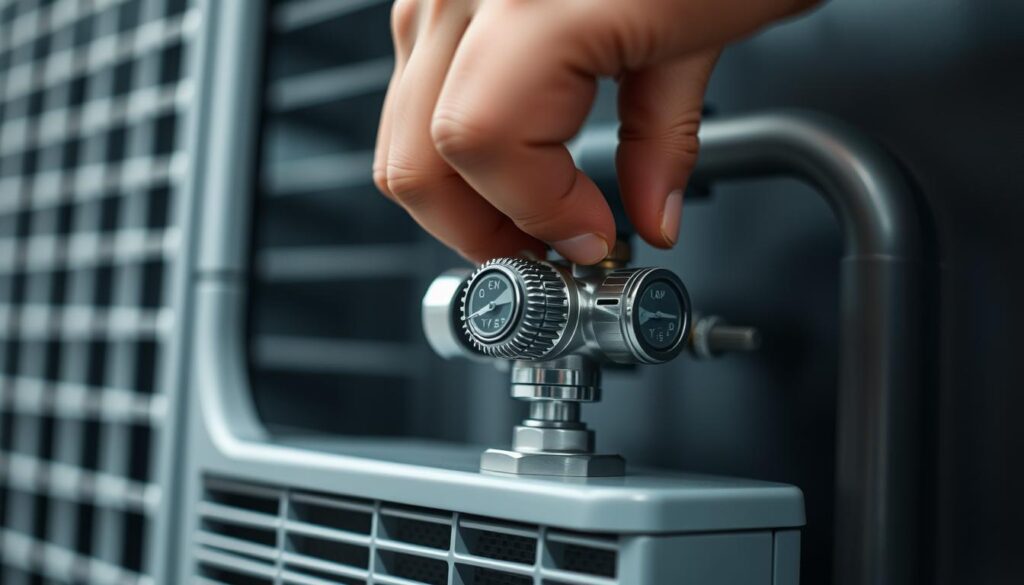
Safe Adjustment Practices and Tools to Use
Before making any adjustments, gather the right tools. You’ll need a thermometer, pressure gauge, and a wrench. Safety is crucial, so ensure the unit is powered off before starting. Here’s a step-by-step process:
- Measure Superheat: Use a thermometer to check the temperature at the evaporator outlet. Compare it to the saturation temperature.
- Check Pressure: Use a pressure gauge to measure the refrigerant pressure. Ensure it aligns with manufacturer specifications.
- Adjust the Valve: Turn the adjustment screw incrementally—1/2 turn at a time. Monitor the changes carefully.
Validating Changes with Stabilized Readings
After adjusting the valve, wait 15-20 minutes for the system to stabilize. Recheck the superheat and pressure readings. Aim for a superheat range of 6-14°F for optimal performance. If readings are still off, make further small adjustments.
Here’s why validation matters:
- It ensures the refrigerant flow is balanced.
- It prevents overfeeding or underfeeding the evaporator.
- It protects your compressor from damage.
By following these steps, you can fine-tune your HVAC system for peak efficiency. Remember, if you’re unsure, consult a professional to avoid costly mistakes.
Best Practices for TXV Maintenance and HVAC System Longevity
Want to keep your HVAC system running smoothly for years to come? Regular maintenance is the key to ensuring your valve and system perform at their best. By adopting proactive habits, you can extend the lifespan of your equipment and enjoy consistent cooling.
Routine Maintenance for Peak Performance
Regular check-ups are essential for your system’s health. Here’s what you can do:
- Clean the Evaporator Coil: Dirt buildup can reduce efficiency. Schedule cleaning to ensure proper air flow.
- Check Refrigerant Levels: Low or high refrigerant can strain your valve and compressor. Keep levels balanced.
- Inspect the Sensing Bulb: Ensure it’s securely attached to the suction line for accurate temperature readings.
Benefits of Preventive Care
Proactive maintenance offers long-term advantages:
- Energy Savings: A well-maintained system can reduce energy consumption by up to 15%.
- Extended Lifespan: Regular care can add 5-10 years to your HVAC equipment.
- Fewer Repairs: Addressing small issues early prevents costly breakdowns.
Scheduling Tips for Optimal Results
Plan annual or biannual servicing to keep your system in top shape. Spring and fall are ideal times for check-ups, ensuring your AC is ready for summer and your furnace for winter. By staying consistent, you’ll enjoy reliable cooling and peace of mind.
Comparing TXV and EEV: Which Expansion Valve Benefits Your Home?
Are you curious about the differences between mechanical and electronic expansion valves? Both play a crucial role in regulating refrigerant flow in your HVAC system, but they operate in distinct ways. Understanding their unique features can help you decide which valve is best for your home.
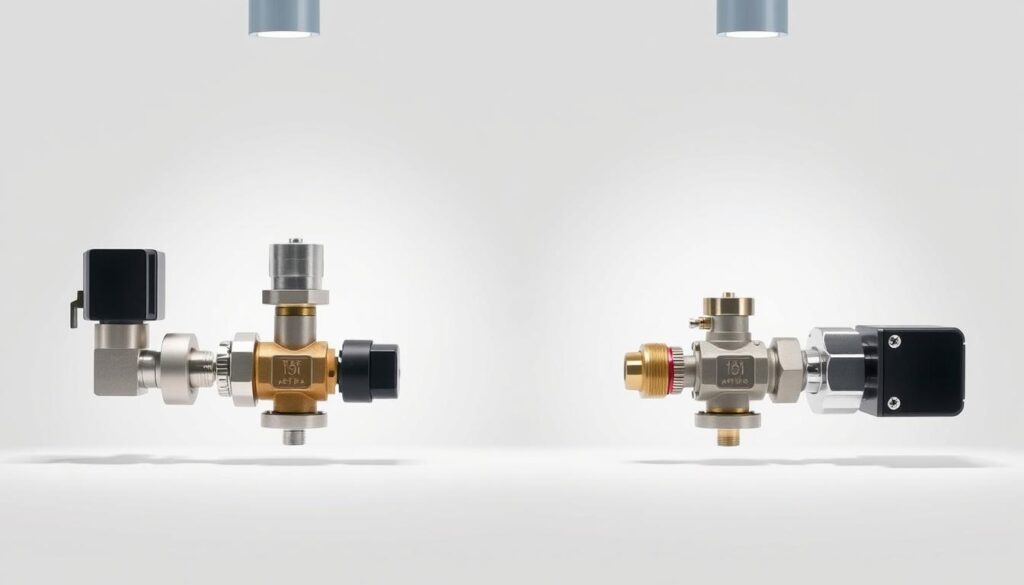
Mechanical vs. Electronic Controls
Thermostatic expansion valves (TXVs) rely on mechanical components to adjust refrigerant flow. They use a sensing bulb and spring to respond to temperature and pressure changes. While effective, their adjustments are slower and less precise compared to electronic expansion valves (EEVs).
EEVs, on the other hand, use electronic controls for real-time adjustments. This allows them to adapt quickly to varying conditions, ensuring optimal performance. For example, EEVs can transition from fully closed to fully open in just a few seconds, making them ideal for systems with rapidly changing loads.
Advantages and Drawbacks
Here’s a quick comparison of the two:
- TXVs: Affordable and reliable, but less precise in extreme conditions like low temperatures.
- EEVs: Highly efficient and adaptable, but more expensive due to advanced technology.
EEVs also reduce frosting on evaporator surfaces and can shorten freezing times by up to 10%. However, their higher cost might not be justified for smaller or less demanding systems.
Cost and Performance Considerations
When choosing between a TXV and an EEV, consider your system’s needs. TXVs are cost-effective and work well in standard setups. EEVs, while pricier, offer greater efficiency and energy savings, especially in advanced systems like VRF units or heat pumps.
For example, EEVs can save up to 15% in energy costs compared to TXVs. They also provide wider part-load variation, maintaining maximum capacity control even at reduced loads.
Which Valve is Right for You?
If you’re looking for a budget-friendly option and don’t need rapid adjustments, a TXV might suffice. However, for high-performance systems or environments with fluctuating loads, an EEV is worth the investment. Always consult a professional to ensure compatibility with your HVAC setup.
By understanding the differences between these expansion valves, you can make an informed decision that enhances your home’s comfort and efficiency.
Real-Life Experiences: How TXV Adjustments Enhance Cooling Efficiency
Have you ever felt the frustration of your AC struggling to keep up on a scorching summer day? For many homeowners, the solution lies in a small but powerful component: the thermostatic expansion valve (TXV). Real-life stories show how proper adjustments can transform your cooling experience.
From Frozen Coils to Perfect Cooling
Take the case of Sarah from Arizona. Her AC unit was constantly freezing up, leaving her home humid and uncomfortable. After a technician inspected the system, they found the valve was underfeeding refrigerant to the coil. A simple adjustment restored the balance, preventing frost buildup and ensuring consistent cooling.
Sarah’s story highlights how a well-adjusted TXV can prevent damage to your system. By regulating refrigerant flow, it protects the compressor and extends the lifespan of your AC.
Energy Savings and Comfort
Another homeowner, Mark from Texas, noticed his energy bills skyrocketing during the summer. After a professional reviewed his system, they discovered the expansion valve was overfeeding refrigerant, causing the compressor to overwork. Adjusting the valve reduced energy consumption by 15%, saving Mark hundreds of dollars annually.
These examples show how timely adjustments can improve air distribution and reduce wear and tear on your system. Regular maintenance ensures your AC operates at peak efficiency, keeping your home comfortable year-round.
Why Professional Intervention Matters
While DIY fixes might seem tempting, professional technicians bring expertise and precision to the table. They can diagnose issues like refrigerant leaks or clogged lines, ensuring your system runs smoothly. Regular reviews by a skilled technician can prevent up to 80% of common AC problems.
By investing in proper maintenance, you can enjoy consistent cooling, lower energy bills, and a longer-lasting system. Don’t wait for issues to escalate—schedule a review today and experience the difference a well-adjusted TXV can make.
Exploring the Impact of TXV on Energy Efficiency and SEER Ratings
Have you considered how a small component in your AC can significantly impact your energy bills? The thermostatic expansion valve (TXV) plays a crucial role in regulating refrigerant flow, directly influencing your system’s efficiency and SEER ratings. Let’s dive into how this valve can make a difference in your home’s comfort and energy consumption.

Industry Statistics and Efficiency Gains Explained
Research shows that adding a TXV to HVAC systems has improved SEER ratings from 10 to 13/14. This upgrade translates to measurable energy savings and lower operating costs. For example, studies indicate that systems with properly adjusted TXVs can reduce energy consumption by up to 15%.
Here’s how the TXV enhances efficiency:
- Optimal Refrigerant Flow: By controlling the amount of refrigerant entering the evaporator, the TXV ensures efficient heat exchange.
- Pressure Regulation: Maintaining the right pressure levels protects the compressor and reduces wear and tear.
- Temperature Control: The sensing bulb detects changes in temperature, allowing the valve to adjust refrigerant flow in real time.
These adjustments not only improve cooling performance but also extend the lifespan of your HVAC system. For instance, a well-maintained TXV can prevent issues like frozen coils or overheating, which often lead to costly repairs.
Today, many homeowners are reaping the benefits of TXV technology. By investing in regular maintenance and proper adjustments, you can enjoy consistent cooling, lower energy bills, and a greener home. Ready to optimize your system? Start by scheduling a professional review to ensure your TXV is working at its best.
Mastering the txv guide: Optimizing Refrigerant Flow and System Protection
Are you looking to maximize your HVAC system’s efficiency and protect its components? The thermostatic expansion valve (TXV) plays a critical role in regulating refrigerant flow, ensuring your system operates smoothly and lasts longer. Here’s how you can optimize its performance and safeguard your equipment.
Proper refrigerant flow is essential for efficient cooling. The TXV ensures the right amount of refrigerant reaches the evaporator, preventing overfeeding or underfeeding. This balance protects your compressor and other components from unnecessary wear and tear.
Here are expert-approved steps to optimize your system:
- Check Subcooling Levels: Proper subcooling ensures liquid refrigerant is delivered efficiently, improving cooling performance.
- Adjust the Valve Carefully: Use a thermometer and pressure gauge to measure superheat. Make small, incremental adjustments to the valve to avoid overcorrecting.
- Inspect the Sensing Bulb: Ensure it’s securely attached to the suction line for accurate temperature readings.
Regular maintenance by a skilled technician is crucial. They can identify issues like clogged valves or refrigerant leaks early, preventing costly repairs. For example, a well-maintained TXV can reduce energy consumption by up to 15%, saving you money on utility bills.
By following these steps, you can ensure your system operates at peak efficiency while extending its lifespan. Ready to explore how outdoor conditions impact your TXV? Let’s dive into the next section.
How Outdoor Conditions Influence TXV Performance in Real Time
Have you noticed your AC behaving differently on hot versus cool days? The thermostatic expansion valve (TXV) is highly responsive to outdoor conditions. Changes in temperature and humidity directly affect how it regulates refrigerant flow, impacting your system’s efficiency.
On a scorching summer day, the valve works harder to prevent overfeeding the evaporator. This ensures the coil doesn’t freeze while maintaining optimal cooling. Conversely, on cooler evenings, the expansion process slows down, reducing refrigerant flow to match the lower demand.
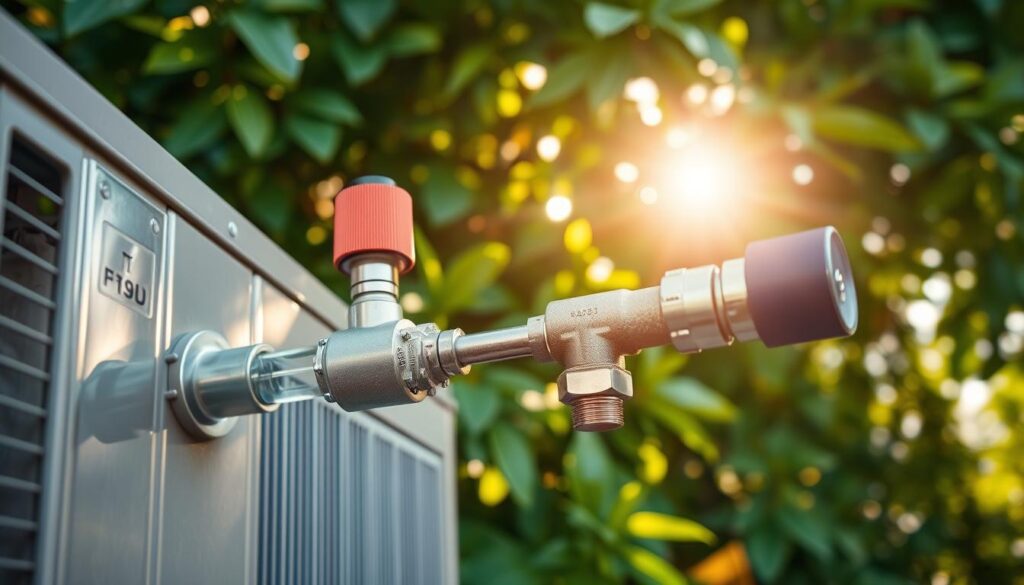
Humidity also plays a role. High humidity increases the load on your system, forcing the valve to adjust more frequently. This can lead to higher energy consumption if the type of refrigerant isn’t optimized for such conditions.
Here’s how your system responds to different outdoor scenarios:
| Condition | TXV Response |
|---|---|
| Hot, Dry Day | Increases refrigerant flow to enhance cooling |
| Cool, Humid Evening | Reduces flow to prevent overworking the system |
| High Humidity | Frequent adjustments to manage heat exchange |
To recognize these effects, monitor your AC’s performance during extreme weather. If you notice inconsistent cooling or higher energy bills, it might be time to check your valve’s settings.
By understanding how outdoor conditions influence your thermostatic expansion valve, you can take steps to optimize your system’s efficiency. Regular maintenance and professional adjustments ensure your AC adapts seamlessly to seasonal changes, keeping your home comfortable year-round.
Integrating Expert Tips and HVAC Data to Build Trust in Your System
How can you trust your HVAC system to perform efficiently year-round? By combining expert advice with the latest industry trends, you can ensure your system operates at its best. Let’s explore how to build confidence in your cooling system through reliable data and practical tips.
Citing Current Research and Industry Trends
Recent studies highlight the importance of proper refrigerant flow in HVAC systems. For example, systems with optimized valve settings have shown up to 15% energy savings. This not only reduces costs but also extends the lifespan of your equipment.
Smart technologies are transforming the HVAC industry. Remote monitoring tools allow technicians to oversee system performance in real-time, preventing unexpected breakdowns. These advancements ensure your system adapts to changing conditions, providing consistent cooling year-round.
Expert Tips for Optimal Performance
Here are some actionable insights from experienced HVAC professionals:
- Regular Maintenance: Schedule annual check-ups to ensure your valve and other components are functioning correctly.
- Monitor Refrigerant Levels: Keep an eye on refrigerant levels to prevent overfeeding or underfeeding the evaporator.
- Upgrade to Smart Controls: Consider integrating AI-enhanced thermostats for better control and energy efficiency.
By following these tips, you can enhance your system’s reliability and performance. For instance, a homeowner in Florida reduced their energy bills by 10% after upgrading to a smart thermostat and optimizing their valve settings.
Building Trust Through Data
Data-driven decisions are key to maintaining an efficient HVAC system. Tools like measureQuick allow technicians to diagnose issues remotely, reducing the need for frequent field visits. This not only saves time but also ensures your system operates at peak efficiency.
For example, a study found that using diagnostic tools reduced callbacks by 80%, improving customer satisfaction. By leveraging these technologies, you can trust your system to deliver consistent cooling without unexpected interruptions.
Ready to take the next step? Implementing these expert tips and staying updated on industry trends will help you optimize your system’s performance. In the final section, we’ll wrap up with actionable insights to keep your HVAC system running smoothly.
Conclusion
Are you ready to take control of your HVAC system’s efficiency and comfort? A well-functioning expansion valve is essential for maintaining optimal refrigerant flow, protecting your unit, and ensuring consistent air cooling. By addressing issues like improper pressure or clogged evaporator coils, you can prevent costly repairs and extend your system’s lifespan.
Regular maintenance, such as checking the sensing bulb and ensuring proper suction, keeps your system running smoothly. Professional inspections can identify potential problems early, saving you energy and money. With these steps, you’ll enjoy reliable cooling and peace of mind.
Take action today to optimize your HVAC system. Schedule a service check-up or consult a trusted technician for personalized advice. Your comfort and savings are worth it!
FAQ
How does a thermostatic expansion valve regulate refrigerant flow?
What role does the sensing bulb play in a TXV?
What are common issues that affect TXV performance?
How can I tell if my TXV is malfunctioning?
What’s the difference between a TXV and an EEV?
How does outdoor temperature affect TXV performance?
Can I adjust the TXV myself?
How does a TXV improve energy efficiency?
What maintenance does a TXV need?
Why is refrigerant flow important for my AC?
Source Links
- What Is a Thermostatic Expansion Valve (TXV)? – Trane®
- Understanding Thermostatic Expansion Valves | White Mechanical
- Understanding the TXV
- Tech tips – HVAC School
- Integrity 1st Heating & Cooling, LLC, Select a New System
- TXV Valves in HVAC | Complete Guide
- The Thermal Expansion Valve (TXV) Explained | United CoolAir
- The Expansion Valve Adjustment Guide | Refrigeration School, Inc. (RSI)
- Why and How to Adjust a TXV/TEV
- The Trouble with TXVs: Diagnosing the Problem
- Getting An AC Expansion Valve Replacement | Anderson Air
- What Causes Refrigerant Leaks in Air Conditioners
- Thermostatic Expansion Valves in Industrial Cooling Systems: Function and Importance – Tunelgroup
- How to Diagnose a Thermostatic Expansion Valve Failure
- How to Inspect and Replace a Thermostatic Expansion Valve in AC
- When and How to Adjust a Thermostatic Expansion Valve (TXV) – techtown
- Goodman "adjustable" TXV
- Unlock the Hidden Efficiency of Your HVAC System with the TXV Thermal Expansion Valve
- How Does An Expansion Valve Work | Anderson Air
- So Many TXVs to Troubleshoot
- EEV Valve Electronic Expansion Valve Advantages Work Priciple
- How Electronic Expansion Valves Work
- Understanding Thermostatic Expansion Valves | Summit Heating & A/C
- Unlock the Hidden Efficiency of Your HVAC System with the TXV Thermal Expansion Valve
- Microsoft Word – HVAC_EE Maintenance_Final
- 43723.PDF
- Appendix A Bibliography
- How Thermostatic Expansion Valves (TXV) Work
- untitled
- Unlock the Hidden Efficiency of Your HVAC System with the TXV Thermal Expansion Valve
- MeasureQuick – Transform Your HVAC Service | Smart Tools & Diagnostics
- Harnessing Technology and Operational Excellence in HVAC Businesses
- Unlock the Hidden Efficiency of Your HVAC System with the TXV Thermal Expansion Valve
- What is a Thermostatic Expansion Valve (TXV)?


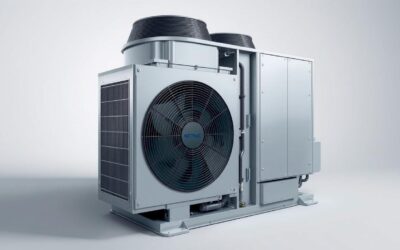

0 Comments